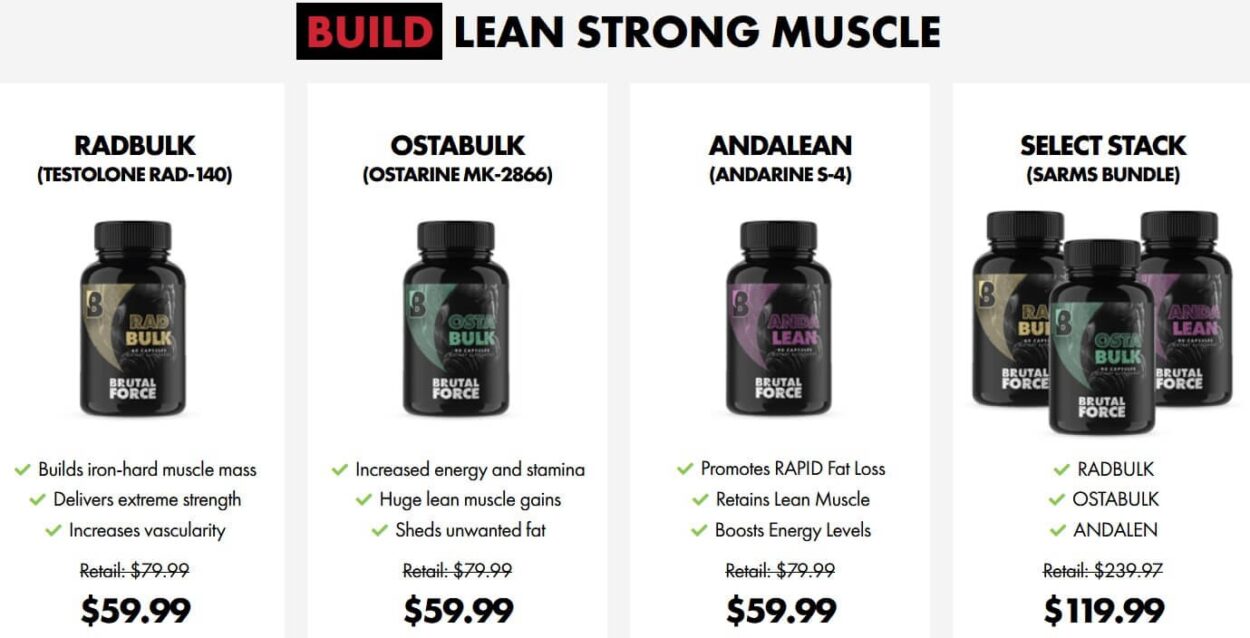Are SARMs Legal
Contents
- 1 Are SARMs Legal
- 2 What are SARMs?
- 3 How do SARMs work?
- 4 Types of SARMs
- 5 Are SARMs legal?
- 6 History of SARMs legality
- 7 Controversies surrounding SARMs
- 8 Health risks and side effects
- 9 Benefits of SARMs
- 10 SARMs in the fitness industry
- 11 Legal alternatives to SARMs
- 12 Research and ongoing studies
- 13 User testimonials
- 14 Educational resources on SARMs
- 15 Conclusion
- 16 Frequently Asked Questions
In the dynamic and ever-evolving landscape of fitness supplements, one term has risen to prominence and become a focal point of extensive discussion – SARMs, or Selective Androgen Receptor Modulators. This section aims to provide readers with a thorough overview of the surging popularity of SARMs within the dynamic realm of fitness circles.
The rising prevalence of SARMs within the fitness community raises pertinent questions about their legality, mechanisms of action, potential health risks, and broader impact on the fitness industry. As we delve into this topic, it becomes crucial to unravel the layers that surround SARMs, offering readers an in-depth exploration of their legal status, historical journey, controversies, benefits, and the alternatives available.
Must Read: Brutal Force Supplements | Legit or Scam?
What are SARMs?
Delving into the intricate details, this section immerses readers in the world of Selective Androgen Receptor Modulators (SARMs). It meticulously breaks down the acronym, providing a nuanced understanding of the purpose and development of SARMs within the pharmaceutical industry. Readers will gain profound insights into what distinguishes SARMs in the vast landscape of performance enhancers.
SARMs, designed to mimic the positive effects of traditional anabolic steroids with fewer side effects, have been on the radar of fitness enthusiasts and athletes seeking an edge in performance. The acronym stands for Selective Androgen Receptor Modulators, emphasizing their ability to selectively target androgen receptors in muscle and bone tissues.
Understanding the development of SARMs in the pharmaceutical industry unveils their initial intent for treating conditions such as osteoporosis, muscle wasting diseases, and certain types of cancer. However, the transition of these compounds into the fitness world has sparked both excitement and controversy.
How do SARMs work?
Embarking on an enlightening journey, this section unveils the intricate mechanism of action of SARMs. By exploring how these compounds selectively target androgen receptors, readers are equipped with a clear and in-depth insight into the scientific intricacies behind SARMs and their impact on gene expression and protein synthesis.
The primary allure of SARMs lies in their ability to target specific androgen receptors, focusing their effects on muscle and bone tissues while minimizing impact on other organs. Unlike traditional steroids, which can lead to a range of side effects due to their broad influence on various bodily functions, SARMs offer a more targeted approach.
When a user takes SARMs, these compounds bind to androgen receptors in a tissue-selective manner. This selectivity allows them to influence gene expression and protein synthesis, promoting muscle growth and potentially aiding in fat loss. This focused action is hailed as a groundbreaking advantage in the world of performance enhancement.
Types of SARMs
Beyond the basics, this section transcends introductory knowledge. It provides readers with a panoramic overview of the diverse landscape of SARMs, outlining the specific uses and the varied benefits and potential risks associated with each type. Armed with this knowledge, readers can make informed decisions aligned with their unique fitness goals.
The world of SARMs is multifaceted, with various types catering to specific fitness objectives. Ostarine, also known as MK-2866, is renowned for promoting lean muscle mass and aiding in the preservation of muscle during periods of caloric deficit. Ligandrol (LGD-4033) is recognized for its potential to increase bone density and muscle mass, making it a popular choice for bodybuilders.
RAD-140, often referred to as Testolone, is believed to enhance endurance and stamina, making it appealing for athletes seeking improved performance. Each type of SARM carries its own set of benefits and risks, and understanding these nuances is crucial for users navigating the landscape of performance-enhancing compounds.
Are SARMs legal?

At the core of the discussion, this critical section navigates the complex legal landscape surrounding SARMs. It addresses the current legal status, shedding light on the roles of regulatory bodies tasked with overseeing their legality. Emphasis is placed on the imperative need for readers to stay informed about the legal status in their respective jurisdictions.
The legal status of SARMs is a patchwork quilt, with significant variations across different countries. In the United States, for example, SARMs are not approved for human consumption, and their sale is often labeled as a violation of the Food, Drug, and Cosmetic Act. However, their possession for research purposes is not explicitly prohibited.
Regulatory bodies, such as the U.S. Food and Drug Administration (FDA) and the World Anti-Doping Agency (WADA), closely monitor SARMs. WADA has included SARMs in its list of prohibited substances, making their use a violation of anti-doping rules in sports. Understanding these regulatory nuances is paramount for users to avoid legal pitfalls.
History of SARMs legality
Venturing into the historical narrative, this section provides readers with a chronological exploration of the legal journey of SARMs. It delves into the ebbs and flows of changes in regulations, unraveling the influencing factors that have shaped the current legal status. Readers will gain a profound appreciation for the historical context, providing a solid foundation for discussions on legality.
The inception of SARMs dates back to the early 1990s when scientists began exploring compounds that could selectively target androgen receptors. Initially, their development was driven by the desire to find alternatives to traditional steroids, which often led to severe side effects.
As SARMs progressed through preclinical and clinical trials, their potential therapeutic applications became evident. However, their transition into the fitness and bodybuilding community marked a turning point in their legal trajectory. The surge in popularity prompted regulatory bodies to reevaluate their stance, leading to a dynamic interplay of legal restrictions and evolving perceptions.
Controversies surrounding SARMs
Turning the spotlight on controversies, this section unveils athlete scandals and delves into doping accusations. It addresses not only public perception but also the ethical debates surrounding the use of SARMs in competitive sports. The goal is to provide readers with a nuanced perspective on the multifaceted aspects of SARMs.
The intersection of SARMs and professional sports has been marred by controversies. Athletes testing positive for SARMs have faced sanctions, with accusations of doping clouding their careers. The ethical debate revolves around the fairness of using substances that provide a performance edge, especially when their legality and long-term effects are still under scrutiny.
Public perception plays a significant role in shaping the narrative around SARMs. While some view them as innovative tools for achieving fitness goals, others see them as potential threats to the integrity of sports. The controversies surrounding SARMs underscore the complex ethical considerations in the pursuit of enhanced performance.
Health risks and side effects
Taking a deep dive into the potential drawbacks, this section presents a comprehensive analysis of the health risks associated with SARMs. Emphasis is placed on the paramount importance of responsible usage, including proper dosages and cycles, to mitigate these risks effectively.
While SARMs offer a more targeted approach compared to traditional steroids, they are not without risks. Users may experience hormonal imbalances, liver toxicity, and other side effects. The severity of these side effects can vary based on factors such as the type of SARM used, dosage, and individual response.
Responsible usage involves adhering to recommended dosages and cycle lengths, with careful consideration of post-cycle therapy (PCT) to restore hormonal balance. Understanding the potential health risks equips users with the knowledge needed to make informed decisions about incorporating SARMs into their fitness regimens.
Benefits of SARMs
Shifting the narrative to the positive side, this section explores the myriad benefits of SARMs. From increased muscle mass to improved fat loss and enhanced recovery, readers are treated to a thorough exploration. A comparative analysis with traditional steroids offers readers a broader perspective on the potential advantages of SARMs.
The appeal of SARMs lies in their potential benefits for fitness enthusiasts and athletes. Studies suggest that SARMs can promote muscle growth, increase bone density, and enhance fat loss. Their tissue-selective targeting is believed to offer these benefits with fewer side effects than traditional steroids.
Comparing SARMs to traditional steroids highlights their potential advantages. Traditional steroids, while effective in promoting muscle growth, often come with a range of side effects, including liver damage, cardiovascular issues, and hormonal imbalances. SARMs, with their selective targeting, aim to minimize these side effects while delivering comparable benefits.
SARMs in the fitness industry
Evaluating the prevalence of SARMs in the fitness industry, this section sheds light on their adoption among bodybuilders and athletes. Furthermore, it analyzes the evolving market trends, showcasing the profound impact of SARMs on shaping the fitness landscape.
The fitness industry has witnessed a surge in the use of SARMs, with bodybuilders, athletes, and fitness enthusiasts incorporating them into their regimens. The appeal lies in their potential to enhance performance and physique without the severe side effects associated with traditional steroids.
Market trends reflect this growing popularity, with an increasing number of products containing SARMs entering the market. However, this surge has also attracted regulatory scrutiny, prompting discussions about the need for clearer guidelines and regulations to ensure the safety of users.
Legal alternatives to SARMs

For readers conscientious about legal implications, this section embarks on an exploration of legal alternatives. From natural supplements to legal performance enhancers, a comparative analysis aids readers in making informed decisions that align with existing regulations.
Recognizing the legal complexities surrounding SARMs, many individuals seek alternatives that offer similar benefits without the associated legal risks. Natural supplements, such as protein powders, amino acids, and creatine, remain popular choices for those looking to support their fitness goals without delving into the realm of performance-enhancing compounds.
Legal performance enhancers, approved for use in sports and fitness, provide another avenue for individuals seeking to optimize their performance within established legal frameworks. These alternatives offer a range of benefits without the legal ambiguities associated with SARMs.
Research and ongoing studies
Venturing into the realm of scientific curiosity, this section explores the ongoing studies on SARMs and their potential applications. Readers gain insights into future implications and developments, contributing to a clearer understanding of these compounds in the scientific community.
The scientific community continues to explore the potential applications of SARMs, with ongoing studies focusing on their efficacy, safety, and potential therapeutic uses. Researchers aim to unravel the full spectrum of benefits and risks associated with these compounds, providing a foundation for evidence-based decisions.
Ongoing studies delve into areas such as the impact of SARMs on muscle-wasting diseases, osteoporosis, and hormonal imbalances. These studies not only contribute to the body of scientific knowledge but also inform the ongoing discourse surrounding the use of SARMs in both medical and non-medical contexts.
User testimonials
Injecting a human touch into the article, this section presents real-life experiences with SARMs. It captures diverse perspectives on legality and effectiveness, providing a well-rounded view for readers considering SARMs for their fitness journey.
User testimonials offer a glimpse into the real-world experiences of individuals who have incorporated SARMs into their fitness routines. These firsthand accounts provide valuable insights into the perceived benefits, challenges faced, and the impact on overall well-being.
Understanding that individual responses to SARMs can vary, user testimonials contribute to a more holistic understanding of the user experience. Readers can glean insights into how others navigate legal and ethical considerations while striving to achieve their fitness goals with the support of SARMs.
Educational resources on SARMs
Empowering readers with the tools for informed decision-making, this section highlights reliable educational resources for understanding SARMs. It underscores the importance of accessing accurate information from reputable sources, ensuring that readers navigate the sea of information with confidence.
In the digital age, a wealth of information is at our fingertips. However, distinguishing reliable sources from misinformation is crucial, especially when it comes to substances like SARMs. Reputable educational resources, scientific journals, and expert-reviewed articles provide a solid foundation for understanding the science, legality, and ethics surrounding SARMs.
Encouraging readers to delve into educational resources equips them with the knowledge needed to make informed decisions about SARMs. Being well-informed not only ensures a safer approach to usage but also contributes to a broader awareness of the complex landscape surrounding these compounds.
Conclusion
Summarizing the intricate SARMs journey, this section reiterates key points and encourages readers to prioritize responsible use and adherence to regulations. It serves as a guide for readers, providing a compass to navigate the complexities of the SARMs landscape effectively.
As the curtain falls on this exploration of SARMs, it’s essential to emphasize the dynamic nature of the landscape. The legal, ethical, and scientific considerations surrounding SARMs continue to evolve, necessitating ongoing awareness and adaptability. Readers are encouraged to approach the use of SARMs with a balanced perspective, considering the potential benefits alongside the associated risks and legal implications.
Frequently Asked Questions
- Are SARMs completely legal worldwide?
- The legal status of SARMs varies by country, with some permitting research use and others classifying them as controlled substances. It’s crucial to understand the regulations in your jurisdiction.
- What are the potential health risks of using SARMs?
- SARMs may pose risks such as hormonal imbalances and liver toxicity. Responsible usage, including proper dosages and cycles, can help mitigate these risks.
- Are there legal alternatives to SARMs with similar benefits?
- Yes, several legal alternatives, such as natural supplements, offer benefits similar to SARMs without the legal implications.
- How have SARMs impacted the fitness industry?
- SARMs have gained popularity among bodybuilders and athletes, contributing to a growing trend in the fitness industry.
- Where can I find reliable information about SARMs?
- Reliable educational resources, scientific studies, and reputable fitness websites provide information about SARMs. Always cross-reference multiple sources for accuracy.
- What ongoing studies are being conducted on SARMs?
- Ongoing studies focus on exploring the efficacy, safety, and potential therapeutic uses of SARMs. Scientific journals and research institutions are valuable sources for staying updated on the latest findings.
- How do SARMs compare to traditional steroids in terms of benefits and risks?
- SARMs offer a more targeted approach, potentially providing benefits similar to traditional steroids with fewer side effects. However, individual responses can vary, and users must weigh the benefits against potential risks.



